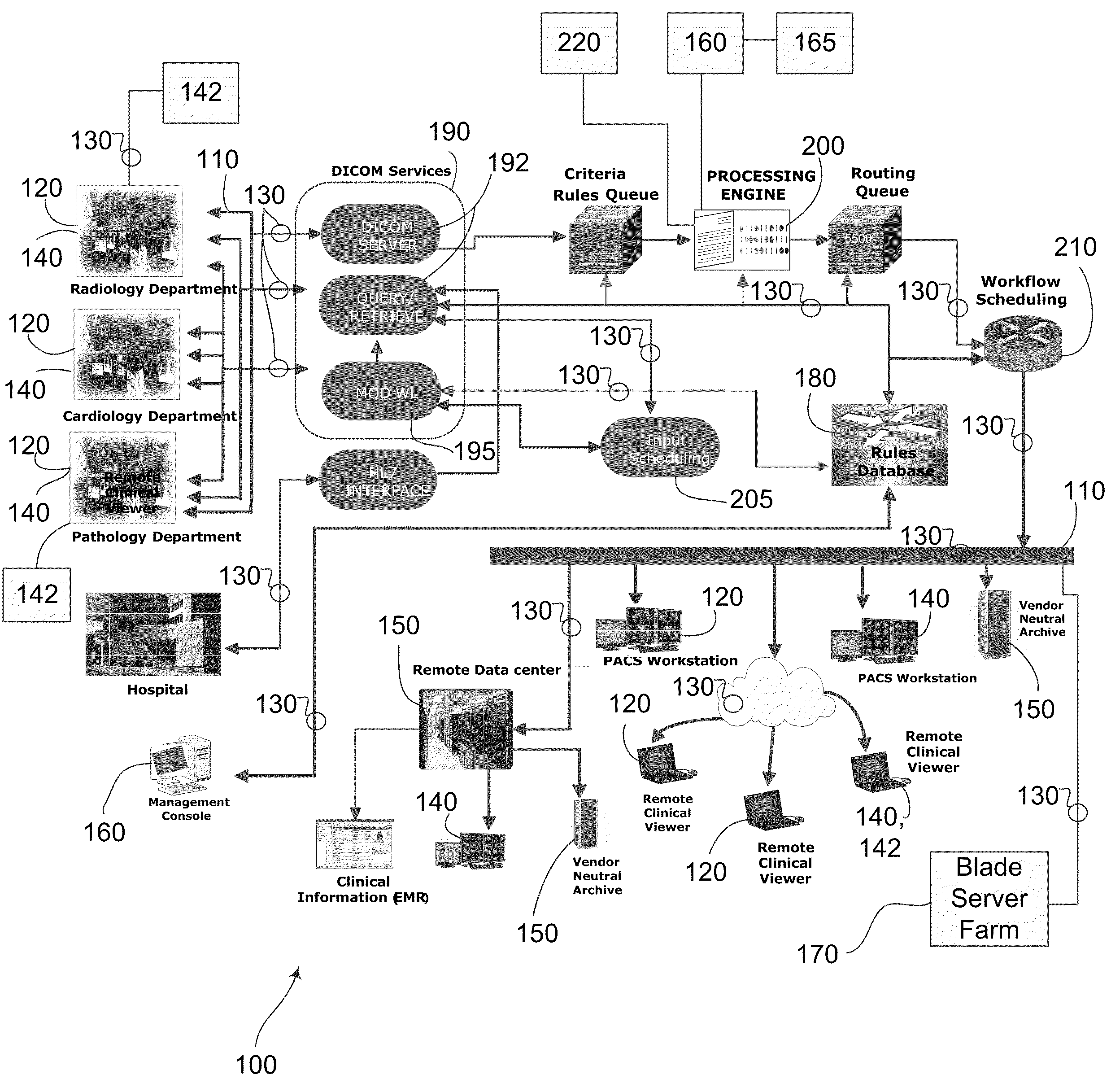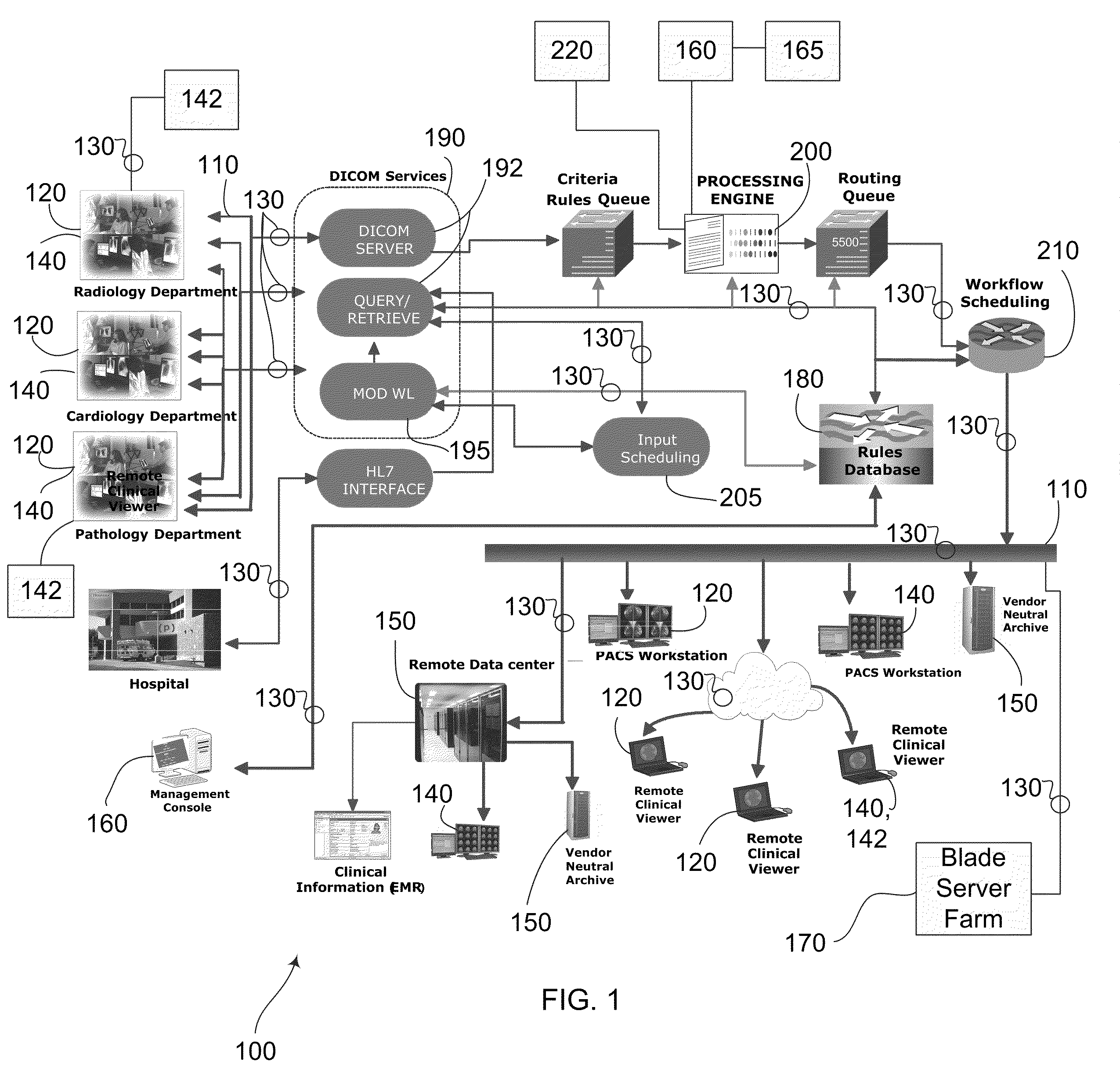This capability is needed in many industries, which presently must hire expensive consultancies to design
custom hardware and
software solutions to accomplish it.
The large number of different types of such legacy systems and correspondingly large number of formats has resulted in many challenges due to the incompatibilities between such systems and formats.
One particularly challenging area of incompatibilities is illustrated with respect to the
medical imaging field of technology.
The need to communicate diagnostic imaging studies or media objects between different legacy
medical imaging systems and modalities, other associated
software applications, more modern-day clinical
software systems such as Electronic Medical Records (EMRs), and alternative research
computing systems has been extraordinarily difficult.
This, in turn requires expensive investments in workstations for skilled QC technologists and / or skilled consultancies having the technical expertise to create such customized solutions that suit the requirements of the particular installation or user.
While this flexibility might have been of use to vendors, such flexibility has created obstacles to the goal of sharing compatible media objects such as diagnostic studies between different systems for the purpose of sharing medical records, including clinical
Electronic Medical Record (EMR) systems.
Combined with the differences between products, systems, and modalities from different vendors, the
DICOM standardization attempts have fallen short of the originally intended goals.
Those experienced in the field of art may appreciate that this is impossible even in same-vendor installations having multiple same-vendor versions of similar imaging systems and modalities due implementation flexibilities afforded by these types of systems.
Such incompatibility is even more pronounced between imaging systems and modalities from different vendors.
The challenges are even greater for users and installations that attempt to establish best of class facilities using the systems, modalities, devices, components, and equipment from many vendors.
Another dimension of complexity is introduced where installations such as imaging centers and medical institutions attempt to collaborate or are required to share information subsequent to a corporate merger.
Even within collaborating and / or co-owned facilities, use of slightly different
nomenclature in the ancillary information can create incompatible attribute values or
DICOM attribute tag values such that the downstream workstations or PACS
workstation may not recognize related historical information.
This in turn creates errors in downstream, non same-vendor system or workstations that are receiving these media objects.
More often than not, however, such compatibility is advertised but unrealized, which usually requires expensive and time-consuming intervention by
highly skilled service providers having the expertise to create a customized hardware and / or software solution to enable the required communication compatibility between same-vendor as well as installations populated with systems, modalities, and equipment from various vendors.
Such customized solutions are also largely inflexible, as the introduction of updated same-vendor equipment and software or different vendor options requires yet more new and custom solutions.
Despite many attempts, modality,
workstation, and information technology infrastructure manufacturers, service providers, users, and operators have been frustrated by the
unavailability of high
throughput and compatibility improving technologies and systems, despite the need for and possibility of improvements.
 Login to view more
Login to view more  Login to view more
Login to view more 


